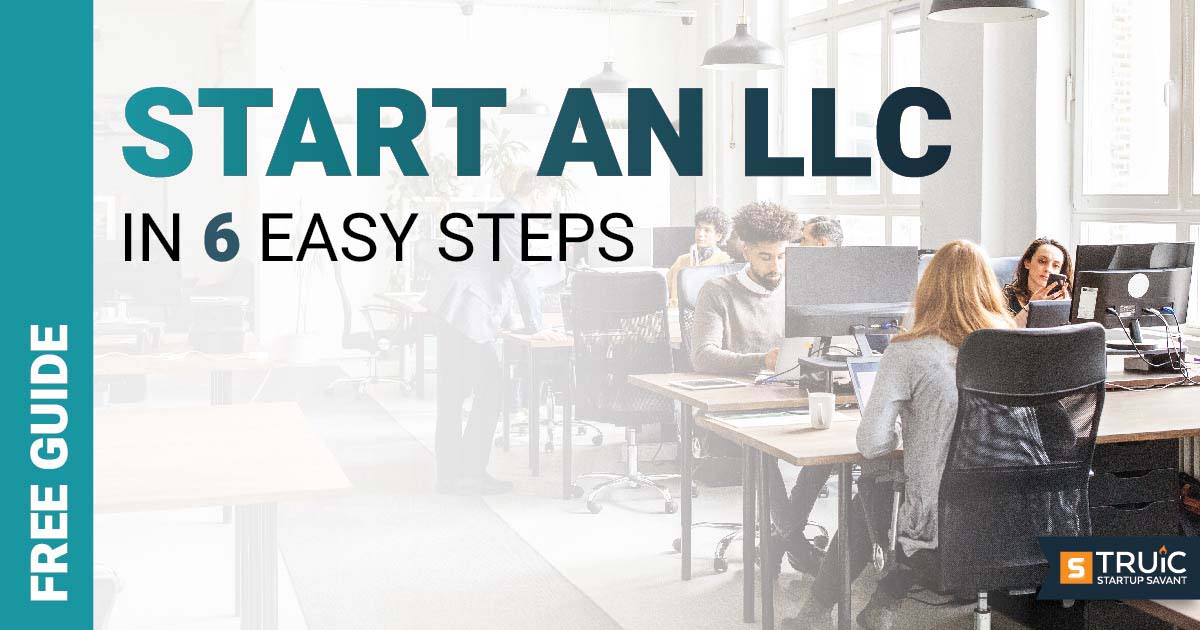How to Validate A Startup Business Idea
Test a Startup Idea Through Market Validation, Analysis, and More

Last Updated: By TRUiC Team

So, you’ve got an awesome business idea and want to bring it to life?
Good for you! Whether you’re opening a new boutique in your town or starting an internet business — you know deep down that you’re on to something that'll change your life.
Before you start plugging away and building the product (or service) for the next 9 months, consider this quote from Eric T. Wagner:
"Even if you have an ah-ha moment, you've still got to test it."
Validating your business idea is critical. Without validation, you could end up completely wasting your time and money on something that no one actually wants or needs.
We're all for entrepreneurial passion and pursuing dreams around here, but unvalidated startup ideas don’t put food on the table. You’ve got to work smart in the beginning to avoid making some all-too-common mistakes.
This process doesn't have to be incredibly overwhelming — and you don’t have to spend thousands of dollars on market reports. We'll provide you with some great examples of entrepreneurs in action so you can form your own strategy for testing and validating your startup idea. Let’s dive in!
Step 1. "The Thing" Startup Ideas Need

Most great business ideas start with a problem.
- Tons of people don’t have time to brew an entire pot of coffee in the morning, hence the Keurig.
- Some businesses struggle with brand building and marketing, hence professionals like Ali Shwanke and Jackie Steinmetz.
- Many entrepreneurs are overwhelmed by the amount of vague information available and need a little direction to get started, hence, Startup Savant.
Why start there? Because the product or service that you’re building should be tremendously valuable to your customer.
Secret: Your business idea needs to offer a solution that your potential customer would pay for. Even providing pleasure to the customer solves a problem - boredom, stress, etc.
Perhaps your product will solve a problem of self-esteem. Why do you think people would pay $345.00 for an ultra-special t-shirt? Probably because it’s a sign of status, or it's the image they want to project - rich, privileged and successful.
Will Ideal Customers Buy?
Since we’re making assumptions about what people will want, we need to actually go into the marketplace and test them. It’s extremely important to know who’s going to pull out their purse (or wallet) and pay.
Start with your target customer. Who is most likely to buy your product or service? What's the age group or demographic? How busy are they? How much spare cash?
Our Problem: For Startup Savant, we target new business owners who need help, guidance, and the right information. But, they don’t have a lot of time to spend researching or taking lengthy, expensive classes.
Our Solution: Provide business owners with fast, effective and affordable business education.
Besides, how do you expect to get quality feedback if you're aiming at the wrong people? That could be disastrous!
What Motivates Your Customer?
Ask yourself which of these 6 buying habits is most relevant to your business idea. Once you have a buying motive in mind, you’ll be able to position your product or service around that motive.
To Gain
Is your customer looking to make more money, look better, generate more sales, get smarter, or appear prestigious?
Fear of Loss
Is your customer looking to reduce costs, guarantee safety, save time, protect health, or reduce risk? What are they afraid of that causes them to spend?
Comfort & Pleasure
Is your customer looking for enjoyment, comfort, beauty, entertainment, recreation, good health, good food, better housing, sexual attraction, or perhaps higher workplace morale?
Avoiding Pain & Discomfort
Does your customer want pain relief, less worry, or lower anxiety about something? Avoidance is a major motive in spending.
Love & Affection
Does your customer buy things to build, save, or reinforce relationships?
Pride or Influence
Does your customer want to possess something great, be in style, learn more, advance in their job or social setting, become a better leader, improve their self-worth, gain more recognition, or look good in public?
What’s the Major Benefit?
What's the customer getting in return for their money-- in their own mind and body? It’s not enough to offer a great solution. You have to understand their emotional response to the problem being solved. For instance, your solution could be:
- Fast & Cheap
- Easy & Simple
- Expensive
- Comprehensive
- Immediate & Helpful
- Discreet or Overt
And when they buy your product they'll be:
- Happy or Relieved
- Excited & Thankful
- Comforted
- Motivated
You get the picture. Get into your customer’s head and figure out their motivation to buy. It shouldn’t be too hard - you’re a consumer too!
Use Mock Offers to Test Startup Ideas
Create a mock-up of what an offer might sound like to find a decent place to start. This doesn’t have to be exactly what you'll bring to market, but it's a way to start developing ideas and seeing what might resonate with potential buyers.
A mock offer template is basically a combination of the price + the biggest benefit your product or service offers. For an entrepreneur opening an Italian restaurant, it may sound something like this:
"For $30 per person, you can enjoy delectable pasta from Italy in the wonderful company of your date."
The goal's to find the right combination so that the customer feels like they’re getting more value than what they’re paying for.
- Don't pass this point until you have a strong solution to a real problem.
- Don't move forward unless you can answer why someone would buy your product or service.
Again, the purpose of this exercise is to give you an idea of what potential customers might respond to, and how you might position your marketing message.
Step 2. How to Do Market Research

Oh, so sad is the cliche tale of the unsuccessful entrepreneur. What's the #1 reason they fail? No market research to show that while their startup idea is totally awesome...
- It's the right concept for the wrong community.
- Too pricey.
- Too much competition.
- Bad location.
- The market isn't big enough.
How do you tell if a great startup idea is good enough to be a real business? Good old fashioned market research. You’ve already done, or are in the process of doing, the hardest part-- creating a mock-product or service. Now let's look at what other homework you need to do:
- Keep track of your competitors and their prices.
- Keep track of industry trends.
- See what types of products or services are being launched.
- Check to make sure your area isn’t saturated with competition.
- See if your local area has enough customers to support your business.
It might sound a little complicated and intimidating at first, but it really is just a matter of looking at the market for your products and services.
- How big is the market?
- Where do you fit? How can you make your business different?
- Who are your competitors?
- What are your competitors charging?
With those questions in mind, let’s dive a little deeper.
Market Research Basics
1) Know Your Market
Market research is the analysis of a specific area, including demographics like age, median household income, education level, etc. You can get a lot of data from the recent Census and the SBA. Market research will help you determine things like price and location. For example, you don’t want to open a high-end retail shop in the middle of an economically depressed downtown area.
Bottom Line: Understanding the size and scope of your market is essential to your startup success.
2) Know Your Industry
The easiest way to learn about your industry is to buy an industry report. There are NAICS & SIC codes for each industry. However, these are very costly, unless you can get them through a library.
You may have to research your industry on the web, which isn't half-bad. For example, you can easily search “retail industry trends” and find a ton of info through professional or trade groups, magazines, and online forums.
Bottom Line: Some careers are dying out, while others are thriving. Don’t get caught trying to join a profession that doesn’t have a future.
3) Know Your Area
Here’s where the cliche unsuccessful entrepreneur really drops the ball: the local market isn't big enough to support their business idea. Why? Maybe their startup idea isn't distinct enough, or maybe there are similar brands down the street.
Look around at your area or marketplace.
- What's your competition like?
- Do you have a product/service that could really stand out?
- Do you have a specific niche you're targeting?
- Do you have a marketing budget and strategy to grow your viability?
4) Know Your Customer
Now you need to take a look at who your customers are.
By all means, define your ideal customers by age, location and income-- but leverage other approaches as well. Try to ‘walk a mile’ in a customer's shoes by using a Customer Empathy Map. This will help you get down in the dirt and understand all the relevant aspects of who your customers are as human beings.
Learn everything you can about your ideal customer. Follow them on social media, read up on the blogs/websites they spend time on. Heck, you can even personally ask them what they like or dislike about your competitor's product or service.
5) Know Your Competition
Do a little recon to see if you’ve got any competition. Is someone in the market selling the same solution you're gunning for? Is there something they're doing that you could do better?
- Competition research is looking at what you're going to offer and how it compares to similar products or services on the market.
- What are the features, prices, and benefits of your product, and how do they compare to your competitor's?
- Making a simple comparison chart that outlines these points is a great way to go about it.
Bottom Line: Whatever your competitors are doing, figure out a way to do it better.
Market Research Grunt Work
Now let’s talk about the actual dirty work: conducting the market research. Let’s look at the three ways you can get all the information you could possibly need.
1) Overview Research
This kind of research includes looking through marketing databases, industry magazines, industry websites, trade and industry associations, etc. The only problem with this kind of market research is that it takes up a lot of time.
Pro Hack: Use a tool like Pocket to save different pieces of information while you're browsing. Browse for a couple hours, save the most relevant content you find, and come back to it the next day.
2) Field Research
Go out into the world and use observation, experiments, and questions to gather information.
Observation might include visiting your competitor's store and actually watching what people buy. (Don’t be creepy though!)
As an experiment, you could try a competing software service's free trial, then reach out to a few other users and get their thoughts on it. You could even go a step further and find a community (or forum) for that software to find out what your competitors are doing right...and wrong.
Field research is another affordable way to do market research yourself, but it can be a little bit time consuming.
3) Group Research
This is another great way to get inside your customers' minds and figure out their pains. List your top 5 potential customers and invite them to your office or a coffee shop. After you spend some time enjoying their company, ask them to answer a few questions about your business idea.
These questions could be something like:
- What do they think your product or service could do better?
- Would they choose your business over your competitors?
- How do they make buying decisions on this topic?
There are a number of other ways to carry out market research, but those three are terrific places to start. Even if you have the money to hire a private company to do all of this for you, you should still get down in the dirt and personally understand the needs and goals of your customers, if your product/service is viable, and what you need to do to be successful.
Step 3. S.W.O.T Analysis
SWOT's like your best friend telling you your current strategy or startup idea sucks. It lets you know where your true skills are and uncovers any weaknesses you'd like to deny.
SWOT analysis?
- Strengths: What is it that you and your business idea do REALLY well?
- Weaknesses: Where are the weak points?
- Opportunities: What are your most apparent opportunities? What might be less obvious?
- Threats: What are the biggest threats you're facing?
Easy enough, right?
How SWOT analysis helps
Let's say you’re a landscaper and your biggest strength is designing custom decorative gardens. Your customer service is outstanding and you focus on building long-term relationships with your clients.
Your biggest weakness is that you run a small operation, and you don't have the equipment that larger landscaping firms have.
After a SWOT analysis,
- You'll understand that your strategy should focus on your relationship-building and design skills, which are two things your competitors don't have.
- You'll be able to see how you can leverage your strengths against your weaknesses.
The point is to see the connections. It's a simple exercise, but it can truly give you some insights you hadn't thought of before.
What are Your Strengths?
- What advantages does your organization have?
- What do you do better than anyone else?
- What unique or low-cost resources can you draw upon that others can't?
- What do people in your market see as your strengths?
- What's your organization's Unique Selling Proposition (USP)?
Consider your strengths from an internal perspective, as well as from the point of view of your customers and people in your market. If you're having difficulty identifying your strengths, try making a list of your organization's characteristics. Hopefully some of the points will be strengths!
What are Your Weaknesses?
- What could you improve?
- What should you avoid?
- What are people in your market likely to see as weaknesses?
- What factors cost you sales?
Again, consider this from an internal and external standpoint: do other people see weaknesses that you don't? Are your competitors doing any better? It's best to be realistic and face any unpleasant truths as soon as possible.
What are Your Opportunities?
What good opportunities can you spot? What interesting trends are you aware of? Useful opportunities can come from such things as:
- Changes in technology and markets.
- Changes in government policy related to your field.
- Changes in social patterns, population profiles, lifestyles, etc.
- Local events.
A good approach is to look at your strengths and ask yourself whether they open up any opportunities. Alternatively, look at your weaknesses and ask yourself whether you could open up opportunities by eliminating them.
What are Your Threats?
- What obstacles do you face?
- What are your competitors doing?
- Are quality standards or specs changing?
- Is changing technology threatening your position?
- Do you have bad debt or cash-flow problems?
- Could any of your weaknesses seriously threaten your business?
Set up for Startup Success!
Don’t become an unsuccessful entrepreneur by failing to do proper market research. It’s hard enough to establish a business, but trying to grow a business in the wrong market... now that’s a recipe for failure. Remember, if you fail to plan, plan to fail.
Step 4. How Your Startup Idea Makes Money

Now that you know you provide incredible value to your customers, it's time to figure out how much to charge or which revenue streams fit your business best.
It's important to realize there are more options than you might think. Did you know that with the product you're bringing to the market, it's possible to license (or rent) the rights to a larger company and receive a percentage of every sale?
You'd still see your product on the market, but the path you'd take and the revenue streams you generate would be completely different. Stephen Key built his entire business by using this method, and he's made a killing.
Ways Businesses Generate Revenue
- Asset Sale: When your customer buys your product/service, they have every right to do whatever the heck they want with it. Take a butcher shop for example: once a customer buys the meat, they can do with it whatever their heart desires.
- Usage Fee: Based on how much your customer uses your product-- the more they use it, the more they pay. Pay As You Go Phones are a great example. The more minutes a customer uses, the more often they have to purchase minutes.
- Subscription Fees: Generated by continuously selling to your customer every month, quarter, or year. The monthly subscription fee we pay to keep track of our books through Xero is a great example.
- Renting/Leasing: Generated by granting someone exclusive right to a particular asset or piece of property in return for a fee. A real estate company that rents apartments out to tenants is a common example.
- Licensing: Involves allowing customers permission to use your intellectual property in exchange for licensing fees. An example of this would be an independent product developer, like Stephen Key, developing and renting products out to larger companies.
- Advertising: Generated by advertising another company's product or service. For example, Entrepreneur.com generates revenue by placing ads around each of their articles.
Savvy - Not Reinventing Wheels
Think outside the box. The most effective way of doing things may not be conventional. When you're able to pivot and adapt to new environments, you're much more likely to succeed as an entrepreneur.
What if you owned a coffee shop and offered unlimited cups of Joe for $35 a month? Maybe some customers would prefer paying on a monthly basis. A cup of coffee doesn't cost much to make. What if you had 250 loyal customers paying $35 a month when it only costs you $10 in product and supplies to keep up with each person’s consumption?
Our friend Nancy L. Seibel chimed in to add another way this kind of structure could be used in your business.
This is what our heating contractor does. We joined their Comfort Club, for an annual $99. That makes us a priority customer, plus gives us something like 10% off. Basically we earned back a good piece our $99 with our first (expensive) repair. And yes, now we’re not likely to switch to another heating contractor so this model works so well for everyone involved!
Do some testing. Find your secret sauce-- then scale it!
Pro Tip: Any time you can focus on recurring or passive revenue streams, do it. It's a fast and effective way to scale a profitable business.
Step 5. Build a Buyer Persona
With a Business Plan and goals set up to measure progress, you’re ready to move on to increasing brand awareness and visibility. You’ve set up your social media strategy for your startup, but have you thought through your communication approach?
How you communicate with your audience makes all the difference in connecting with them on a deep level and building trust, which in turn increases visibility and transforms leads to customers. In order for your audience to trust you and be interested in what you say, you need to use their lingo.
- Use the words they use to talk about the problems they have-- the problems that your business solves.
- Know what stops them from making a purchase.
- Know how they look for information about the issues they face depending on the role they occupy within their company and industry.
- Have a clear picture of what keeps them up at night.
- Know where they are in the buyer’s journey.
These components make up your buyer persona(s), a.k.a. the people you help through the startup you’ve founded.
If you haven’t built your buyer persona(s) yet, you can get started with the following steps:
- Identify their role: CEO, general manager, end consumer, head of household, etc.
- Gather background info such as average age, income, and interests.
- Know what decisions they oversee.
- Know their common objections.
- Figure out who and what influences their purchase decisions.
- Know their values and fears.
- Know their goals and objectives.
- Get a couple of real quotes from interviews you’ve conducted with target audience members (existing customers are the first ones you should turn to for this type of information).
Building a buyer persona takes time and research, but it's well worth it. Being able to talk in the language your ideal audience uses is tremendously valuable.
Startup Ideas Summary
At the end of the day, you can break all of this info down to a relatively short checklist. The point is to roll up your sleeves and do your homework before investing tons of time and passion into a nonviable business idea.
All of these steps are really about optimization. Find weaknesses in your product, approach, attitude and partnerships, and strengthen them. Don't let disappointing research stop you from pursuing your vision or dream! Just be deliberate. Be informed. Oftentimes all your product or service needs is-- as Tony Robbins would put it-- a pivot.



